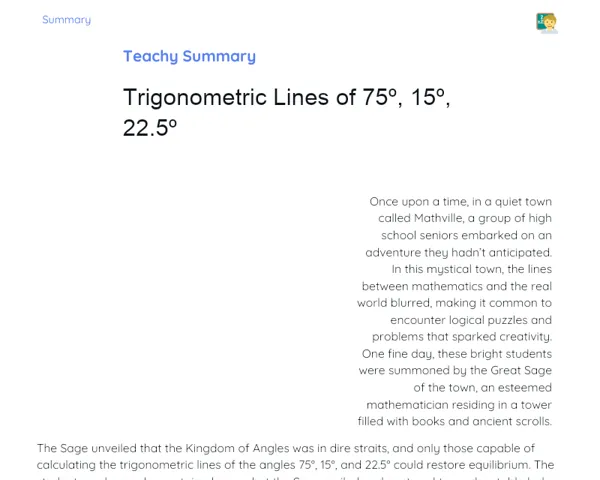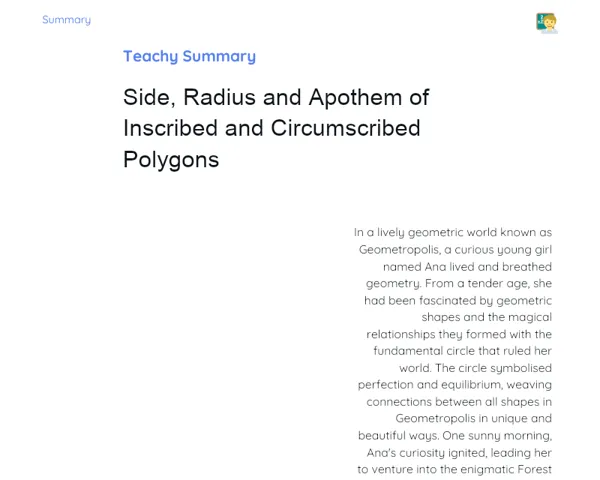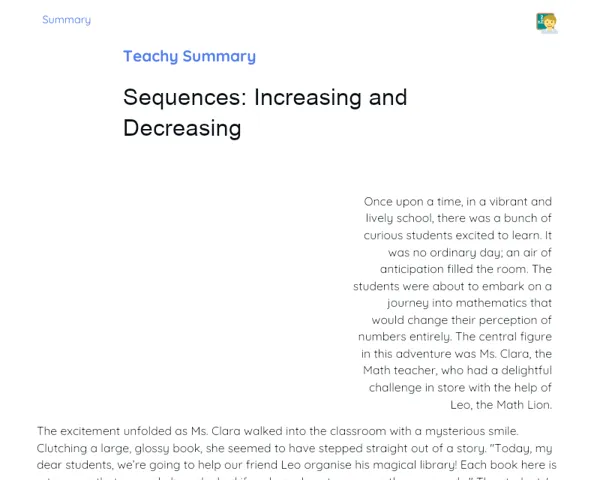📚🔍 Once upon a time at the Digital School…
It was a bright morning as the school year kicked off. The corridors were alive with the 6th graders' enthusiasm, eager to dive into new learning experiences. But in Mr. James’ Mathematics class, something special was on the agenda. Known for his creative and interactive teaching style, he had set up a real digital adventure themed around: Unequal Sharing.
✨ Chapter 1: The Sticker Challenge
Anna and John, best friends since they were little, had amassed a unique sticker collection together. One day during a break, they realised they needed to split their stickers in a different way: Anna had 30 stickers, and John proposed a division where one part should be double the other. The challenge given by Mr. James was in their hands, requiring a mix of maths and logic.
To jumpstart the story, the students faced their first question:
Question: If Anna has 30 stickers and needs to divide them so that one person receives double what the other has, how many stickers will go to each part?
Quickly reasoning and using their digital devices, the students concluded that splitting the stickers into 10 and 20 was the solution, as 10 x 2 = 20. Anna kept 10 stickers while John took 20. This revelation sparked joy among the students, illustrating how maths can apply in a straightforward and relatable way, even during their games.
💻 Chapter 2: Digital Storytelling on Instagram
Energised by their class dynamics, the students formed groups for the next challenge. Mr. James encouraged them to create Instagram stories to explain unequal sharing. Each group would select a creative scenario, employing images, text, stickers, and recording short videos to show the problem and the solution.
With the guidance of their peers, Anna and John explored digital resources, learning the value of visual communication and creativity. The students made use of various editing apps for images and videos, transforming their Instagram posts into effective representations of the mathematical concept.
Question: What digital tools did you utilise to make the explanation more visual and engaging?
Responses highlighted the use of lively images, bright stickers, quick videos, and descriptive texts. Each element was thoughtfully chosen to enhance the story and make the understanding of unequal sharing more accessible. This activity not only cemented their mathematical knowledge but also honed their digital skills.
🎙️ Chapter 3: The Mathematicians' Podcast
Riding high on their Instagram success, the next task involved an even bigger feat: creating a podcast! Students regrouped, with each team crafting a script discussing unequal sharing. They used their voices to work through Anna and John's dilemma, and shared real-life situations where this maths comes into play.
Through their innovative recordings, catchy soundtracks, and background sounds, the podcasts turned into engaging pieces of radio content. The students understood the importance of clarity in communication and how to present concepts to keep an audience interested.
Question: How would you choose the sound elements to make the podcast more interesting?
Ideas included selecting the right soundtracks to enhance the content, sound effects to highlight key moments, and concise explanations throughout the episode to keep the audience engaged. The process revealed how maths and creativity can intertwine beautifully, demonstrating that teaching can indeed be an art form.
🎮 Chapter 4: The Kahoot! Challenge
Finally, to wrap up their educational journey, the students were tasked with crafting quizzes on Kahoot! covering a range of topics from basic problems to more complex unequal sharing scenarios. Each trivia game was thoughtfully created to ensure engagement and knowledge retention in a fun, interactive way.
The groups felt like true quiz masters, brainstorming ways to make their questions both challenging and intriguing. A friendly competition emerged among the students, each group vying to create the most captivating and informative quiz.
Question: How can a question be structured to effectively test understanding of unequal sharing?
The ideal response included crafting questions that required problem-solving and real-world application, like: “If you have 45 stickers and need to divide them so that one part is three times the other, how many stickers will be in each part?” These questions prompted students to use critical thinking and apply their newly acquired knowledge practically.
🔍 Chapter 5: Reflection and Feedback
As this mathematical tale concluded, each group showcased their stories and podcasts. The virtual classroom transformed into a hub for sharing, where everyone reflected on their learnings, discussed the advantages and challenges faced, and received constructive input from their classmates and Mr. James.
The students pondered the value of the skills they gained, from resolving mathematical problems to creatively employing digital tools. This feedback exchange fostered teamwork and strengthened friendships among the students.
Question: What were the main difficulties encountered while using digital tools to solve the problem of unequal sharing?
Responses ranged from technical issues with audio and video editing to the challenge of simply conveying maths concepts clearly. But most importantly, the students learned that the journey of learning, filled with trial and error, is a vital part of the overall experience.
✨ Epilogue: The Legacy of Learning
With a glowing smile, Mr. James concluded the lesson, highlighting that through digital tools in solving maths problems, the students not only grasped unequal sharing concepts but also cultivated vital skills for the modern era, such as collaboration, creativity, and tech literacy.
Thus, the 6th graders discovered that mathematics could rival any digital adventure in excitement. Together, Anna, John, and their classmates learned that unequal sharing was not merely a tricky problem, but a stepping stone for growth and knowledge. By the end of the day, each student walked away with gained knowledge and skills, and their eyes opened to the new avenues of exploration the digital realm had to offer. They celebrated the magic of maths, the joy of learning, and the power of working together. The end. 🎉



